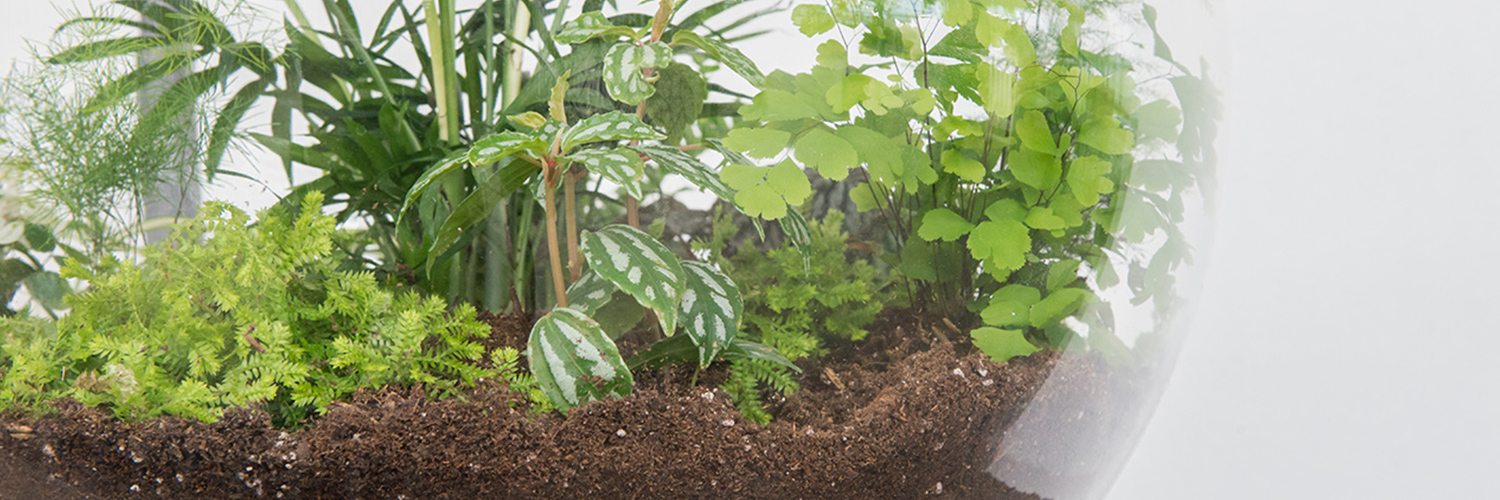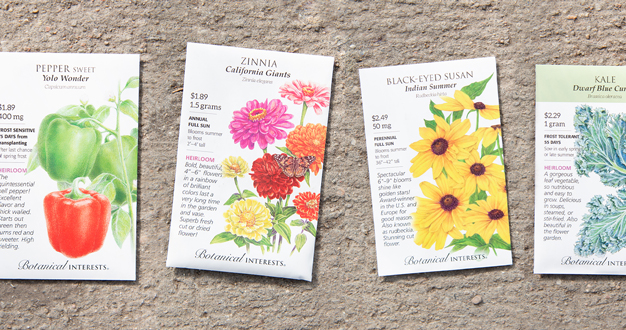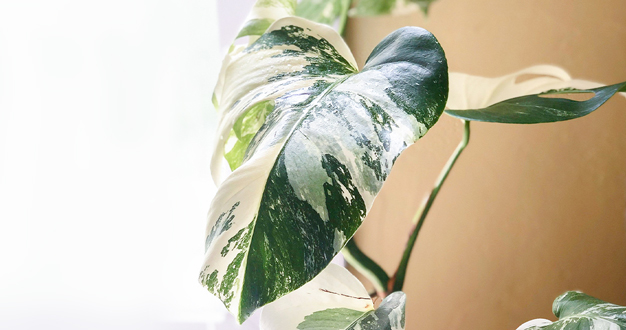
Very simply, a terrarium is a container that holds plants – but with even more room for creativity than a typical pot might offer. It can take many forms depending on your decorative style and the plants you choose to include. A classic terrarium is an enclosed glass container with a sealed lid that creates an almost self-sustaining environment. But a terrarium can also be completely open – perfect for dry-loving cacti and succulents. Or it can be something in-between – a semi-open globe, jar, or vase.
Whichever style you choose, building a terrarium is a fun way to display small plants, demonstrate an ecosystem, or protect vulnerable plants. If it seems a bit intimidating a first, don’t worry – here, we share everything you need to create your first terrarium. From there, the possibilities are almost endless.
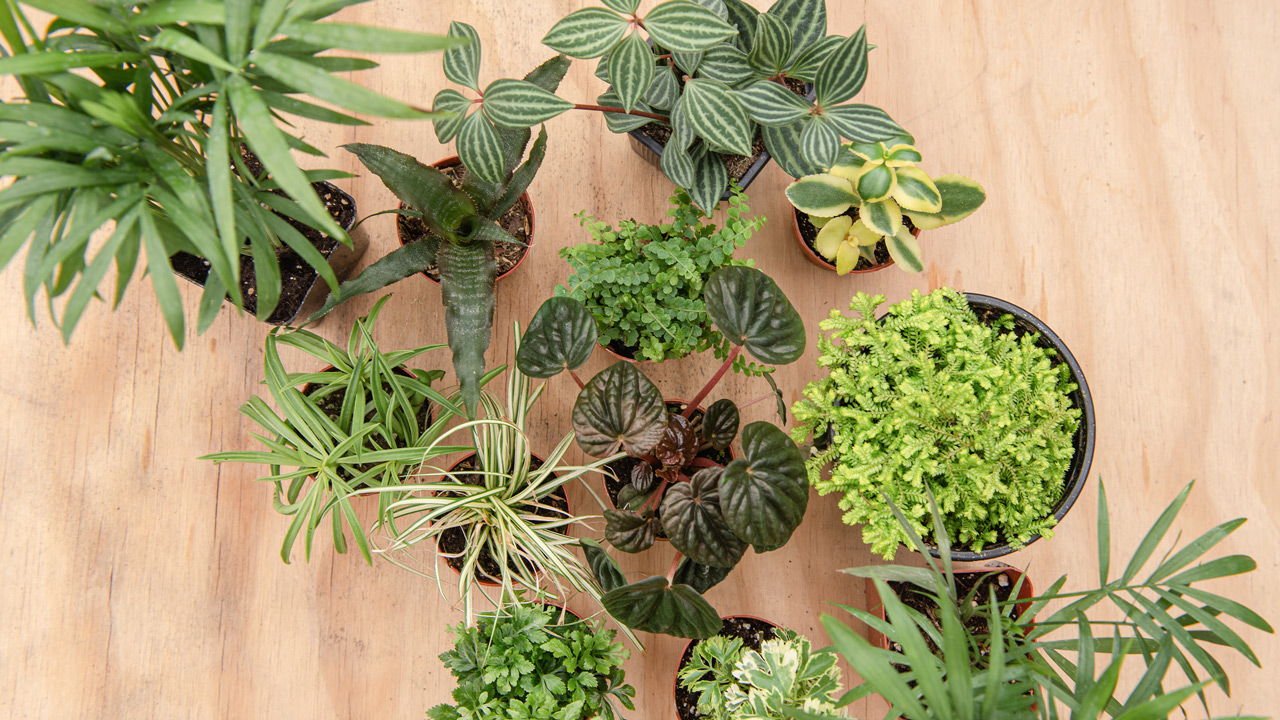
Getting Started
The first step is to match the plants you’d like to keep in your terrarium with a container that suits their needs. Closed and semi-open containers are perfect for most foliage plants like palms, ferns, peperomia, pothos, spider plant, and mosses like selaginella. Cacti and succulents are different though – they prefer drier environments, so an open container is best. And because most terrariums are relatively small, look for slow-growing, baby plants to start – we have tons of your favorite varieties to choose from in the Greenhouse.
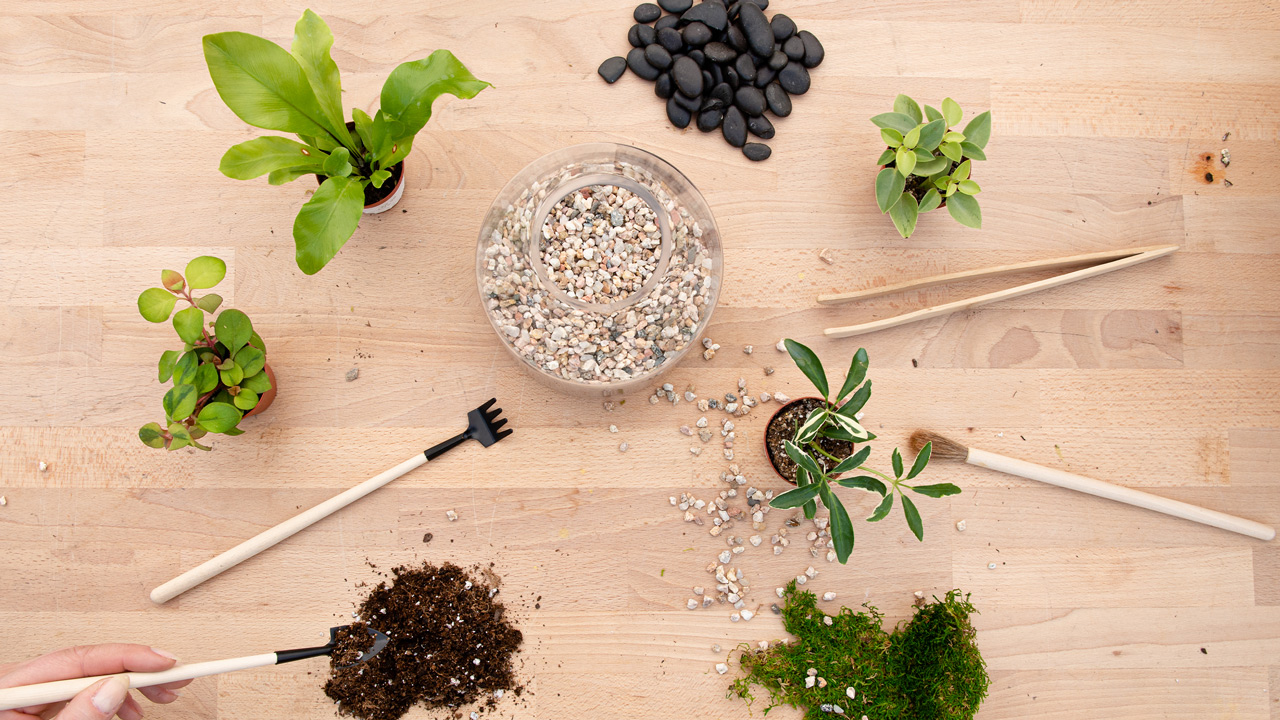
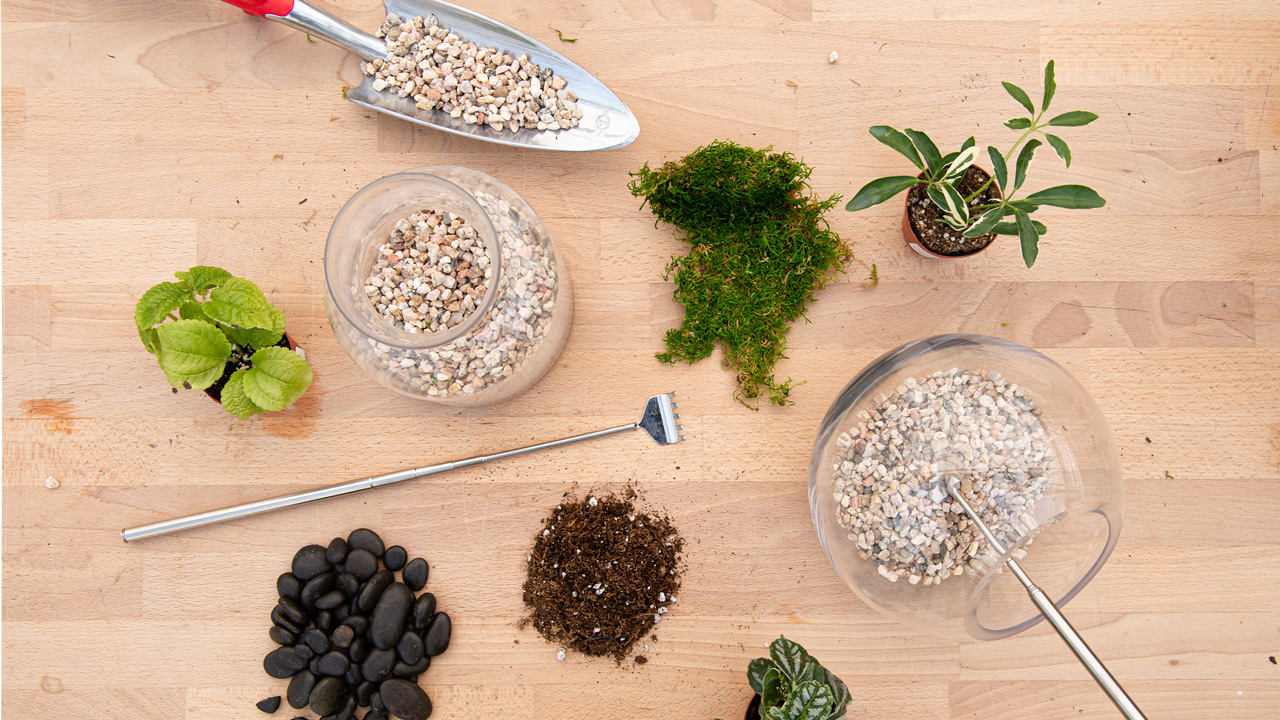
Tools and Supplies
For some semi-open and closed terrariums, limited access can make planting a challenge, so a few special tools may be necessary. Spoons and measuring cups can be used to transfer soil and other materials into tricky places. Tongs or chopsticks are useful for placing plants, moss, and rocks where you want them. A syringe or long funnel and a pair of micro-tip pruners allow for precise watering and trimming. And a long-handled paintbrush keeps everything tidy.
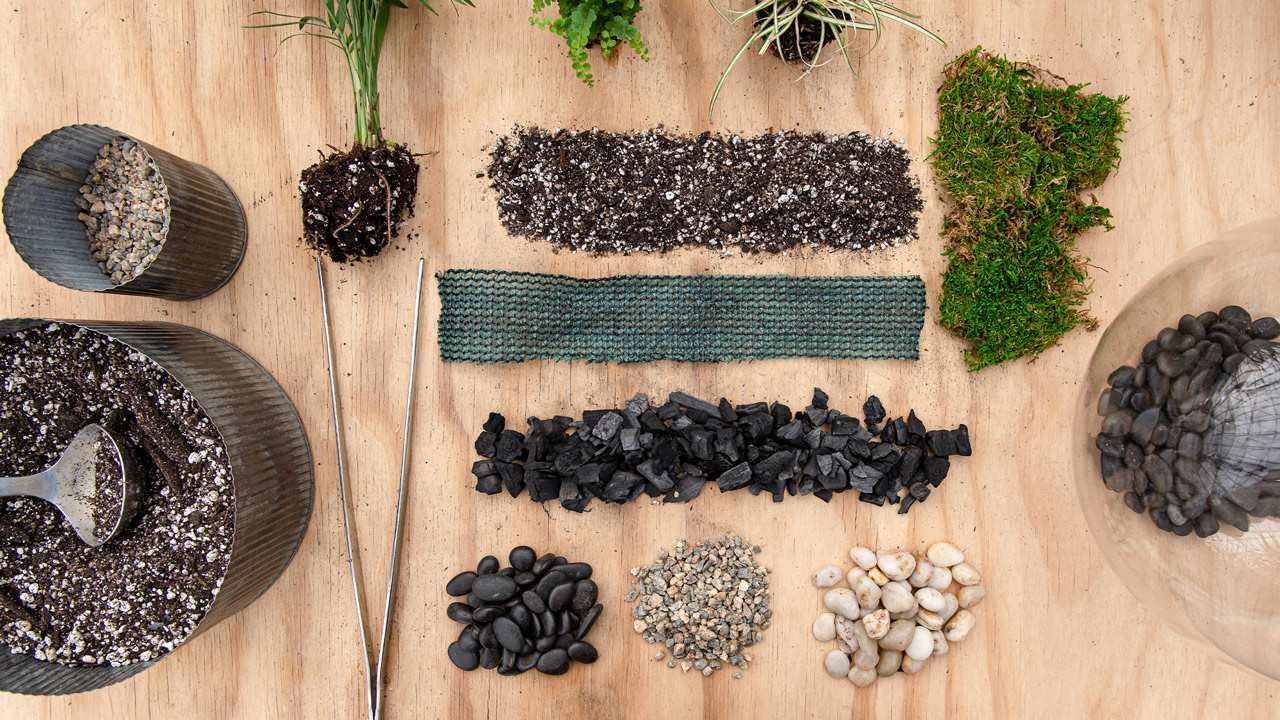
Building in Layers
A layered structure of soil and rock is attractive and interesting to see through a terrarium’s clear walls. And because terrariums typically lack a drain hole, the components help create a healthy environment for the plants’ roots to grow.
At the bottom, start with a layer of gravel or loose rock about one-fourth as deep as the soil layer you plan to use.
On top of the gravel, spread a layer of rinsed charcoal – this layer keeps the terrarium fresh by filtering the water.
Over the charcoal, place a thin mesh screen – shade cloth, fine burlap, or panty hose works well – to prevent soil from settling into the lower layers.
Next, add fresh potting soil that’s appropriate for the type of plants you’ve chosen – a fast-draining cactus mix for cacti and succulents or a general-purpose potting mix for most everything else. Just be sure the soil layer is deep enough to accommodate the plants’ roots.
Then come the plants. Using a spoon, dig a hole in the soil that’s the same size as the root ball for each plant, and use tongs or chopsticks to gently maneuver the plant into position. If necessary, scoop in more soil – but make sure to keep the final soil level the same as it was in the grow pots for each plant. Pat gently to level and firm the soil just a bit. Once the plants are in, you can create an attractive surface using moistened moss, sand, or rinsed gravel too.
And finally, the finishing touches. To add interest to the terrarium and make it your own, consider decorative touches like pieces of bark, colorful rocks, and wandering paths made from small stones. Small toys, figurines, marbles, and other trinkets add extra character too.
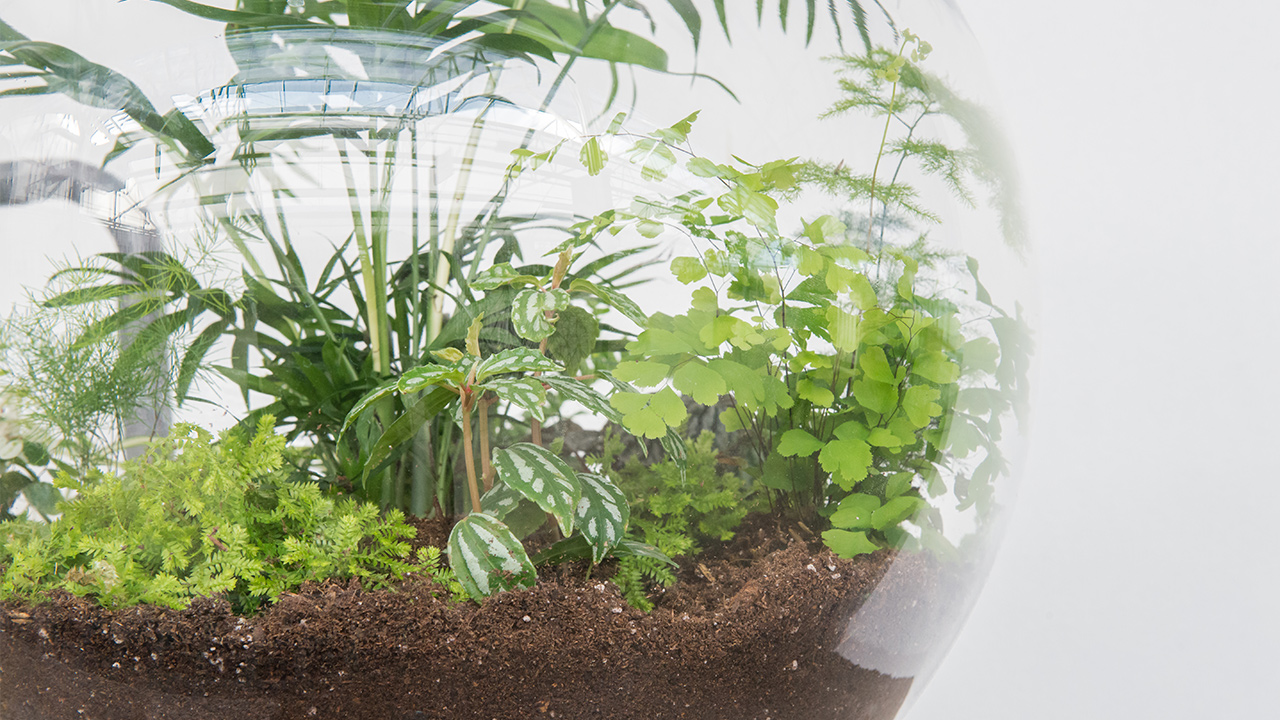
You’re on Your Way
Once your terrarium arrangement is complete, set it in a space with light that’s appropriate for the plants you’ve chosen. Be sure to water it carefully – giving only enough water to moisten the soil around the plants and avoid letting an excess drain into the bottom of the container. There’s no formula for watering that works for every terrarium – how much and how often will depend on the plants, the light, and the container. But figuring out what works best for your terrarium is all part of the art. And if you have questions, just ask us in the Greenhouse. We have all the containers, materials, and plants to inspire your next project – and we’re always happy to help.

